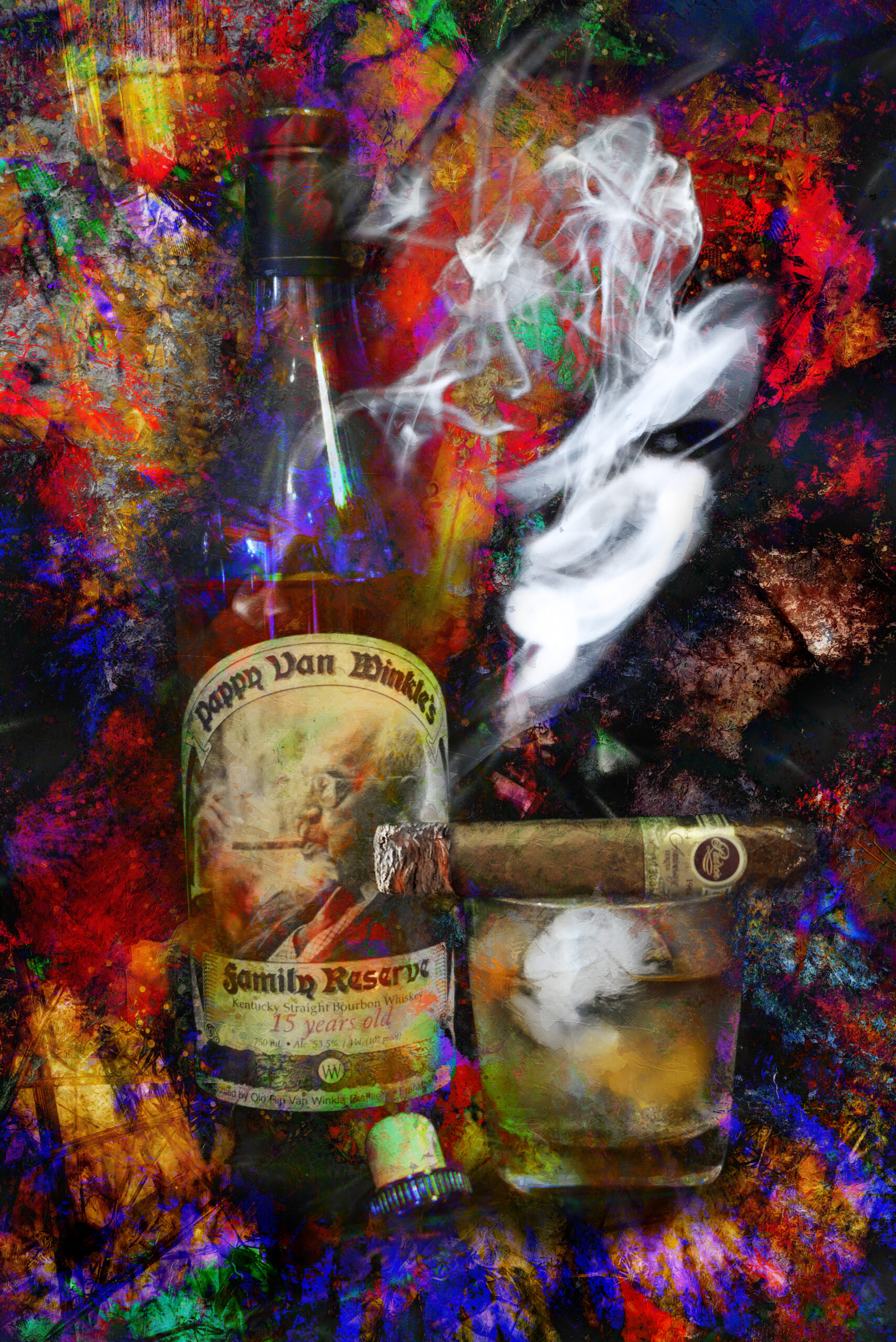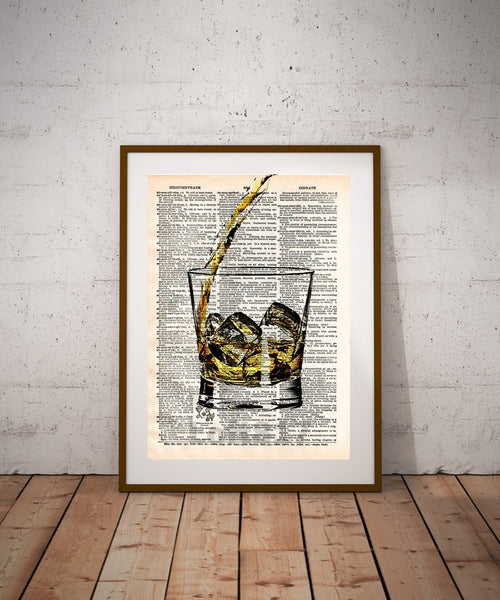The Attraction of Realism Art: A Deep Study Whiskey's Rich Heritage
The Attraction of Realism Art: A Deep Study Whiskey's Rich Heritage
Blog Article
The Relevance of Whiskey Art in Celebrating Heritage and Workmanship in the Beverage Industry
The detailed relationship in between bourbon art and the party of heritage and craftsmanship within the drink industry can not be overstated. Through attentively designed bottles and tags, scotch brands envelop their historical origins and the artisanal skills that specify their manufacturing methods. This creative dimension not only enhances market appeal yet also functions as a channel for cultural narration, fostering a deeper connection in between the craft and the consumer. As we discover the different elements of this subject, interesting inquiries regarding the influence of modern-day trends on standard techniques emerge, prompting more examination.
The Historical Origins of Whiskey
At the heart of scotch's appeal exists a rich tapestry of historical roots that trace back to ancient human beings. The origins of whiskey can be linked to the distillation practices of the Sumerians and Babylonians around 2000 BCE, where early kinds of fermented grain drinks started to emerge. However, it was in the Middle Ages that the art of distillation developed substantially, especially in Ireland and Scotland, bring about the development of scotch as we know it today.
The term "bourbon" itself obtains from the Gaelic word "uisce beatha," meaning "water of life." This phrase highlights the cultural relevance of whiskey in Celtic societies, where it was typically connected with routines, events, and communal bonding. By the 15th century, distillation became an acknowledged craft within reclusive neighborhoods, leading the way for the facility of legal distilleries.
As profession paths expanded, whiskey's popularity grew, transcending regional boundaries and capturing the rate of interest of aficionados worldwide. Bourbon Art. This historic trip reflects not just the craftsmanship behind whiskey production however likewise its integral function in social and cultural contexts, noting it as a substantial drink throughout background
Artistic Expression in Branding
Scotch branding stands as an engaging intersection of virtuosity and business, where aesthetic identification plays a vital function in shaping consumer perception. The appearances of scotch labels, product packaging, and advertising and marketing materials reflect not just the brand's story however likewise its core values and heritage. With creative expression, distilleries communicate a narrative that reverberates with consumers, evoking feelings and sparking links.
Using color, typography, and images in branding offers to distinguish items in a saturated market. As an example, standard motifs might stimulate a feeling of authenticity and workmanship, while modern-day layouts can symbolize development and forward-thinking. This strategic artistic instructions boosts brand recognition and commitment, allowing customers to create an individual connection with the bourbon they pick.
In addition, artistic expression in branding typically functions as a party of regional heritage. Distilleries frequently incorporate local signs or historic referrals right into their designs, developing a feeling of location that invites consumers to partake in a wider social experience. Inevitably, the artistry behind scotch branding not just boosts aesthetic allure yet likewise improves the general narrative of the brand, promoting a deeper recognition for the workmanship and heritage embedded in each bottle.
Craftsmanship in Container Design
The virtuosity noticeable in whiskey branding prolongs past aesthetic identity to incorporate the craftsmanship involved in container layout. Each container functions as a vessel not just for the spirit within, yet additionally for my sources the story it informs regarding its origin, high quality, and practice. The style process requires thorough focus to information, find more as aspects such as form, closure, and product contribute substantially to the overall understanding of the bourbon.
Craftsmanship in container design includes choosing premium glass that can enhance the whiskey's color and clearness, while additionally offering a responsive experience for the customer. The shape of the bottle should be both cosmetically appealing and practical, often mirroring the heritage of the brand. Numerous distilleries select special forms or embossed logo designs that evoke a feeling of authenticity and history.
In addition, the tag design and typography play a crucial role in communicating the brand name's narrative. Realism Art. A well-crafted container not just mesmerizes the consumer's eye however also enhances the brand name's dedication to high quality and practice. By doing this, the craftsmanship of bottle style ends up being an important aspect of the scotch experience, combining creativity with a profound regard for heritage
Cultural Relevance of Whiskey Art
Celebrating custom and workmanship, the social value of whiskey art goes beyond plain appearances, intertwining with the social and historical stories of the regions where it stems. Each container serves as a canvas, portraying the one-of-a-kind tales, folklore, you can try this out and customs that have actually formed local whiskey-making practices. The detailed styles frequently show the heritage of the distillers, including signs and motifs that reverberate with the culture and values of their communities.
Additionally, scotch art plays a vital duty in communal celebrations and parties, working as a tangible web link between individuals and their shared experiences. By appreciating the creativity in scotch product packaging, customers cultivate a much deeper understanding and respect for the craft, ultimately enriching their pleasure of the drink itself.
Modern Trends in Scotch Presentation
In recent times, the discussion of whiskey has evolved to show contemporary tastes and patterns while still recognizing conventional craftsmanship - Limited Edition. Distilleries are significantly concentrating on aesthetic elements that improve the general drinking experience, bridging the space in between heritage and modernity
Cutting-edge container styles have actually emerged, usually incorporating sustainable products and artistic labels that tell engaging tales. Numerous brands currently work together with local musicians, infusing their items with unique aesthetic expressions that resonate with consumers. In addition, limited-edition launches are usually packaged in collectible containers, adding value and appeal for lovers.

Final Thought
In verdict, whiskey art serves as an essential conduit for expressing the heritage and craftsmanship intrinsic in the drink market. With complex branding, innovative bottle styles, and culturally considerable artistic elements, whiskey brand names successfully recognize their customs and attach with consumers.


Craftsmanship in bottle layout includes selecting top notch glass that can boost the scotch's shade and clearness, while likewise providing a responsive experience for the customer. In this means, the workmanship of bottle design ends up being a vital facet of the whiskey experience, merging creativity with an extensive respect for heritage.
In conclusion, whiskey art offers as a vital channel for revealing the heritage and workmanship fundamental in the drink industry.
Report this page